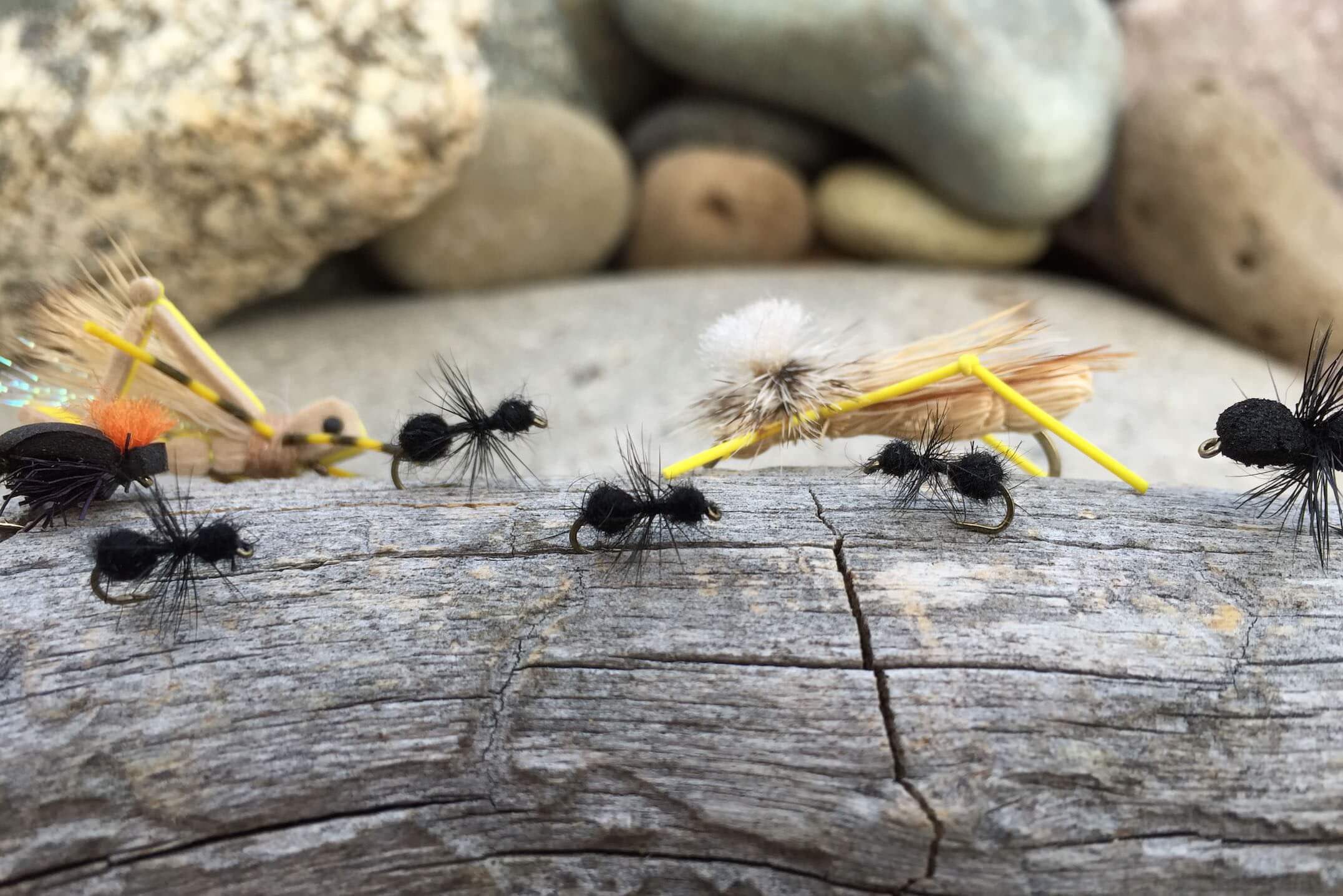When I was younger, I spent an undue amount of time trying to match the hatch, and I’ve had success doing it — but the trouble is, the hatches don’t often come on strong when I happen to be out on the water. Even so, a lot of great hatches hit an hour before dark, so what’s a fly fisherman going to do in the middle of the day? Retreat to a shade tree with a lawn chair and cooler full of beer? I’m a fan of cold beer, but when I make it out on the river, I want to fly fish. So what’s one of the best trout tactics for midday? For hot afternoons?
The lowly ant.
And if that doesn’t work, try the beetle.
Best Trout Flies: Ant Patterns?
Over the last 10 years, I’ve caught more big trout off ant imitations than any other pattern. And more importantly than numbers, I’ve caught more satisfying big trout off ants. When I can’t get a feeding trout to take the pattern that used to be working a half hour ago, I turn to an ant — and I’ll hook up freakishly often. When I’m stalking the banks of a river or high mountain lake, a big hopper pattern will often spook fish sipping in a foot of water. Not the ant, though.
From trout in Colorado lakes to rivers in the shadows of the Tetons in Wyoming, to big browns in Oregon and thick cutthroats in Idaho, ant patterns have worked, again and again.
The ant works floating high and dry. It works trapped in the surface film of the water. And it even works on a dead drift underwater. While standing on a rock above and behind a 17-inch cutthroat on the St. Joe River, I drifted a light elk hair caddis, a hopper, a red humpy, a small adams, and a pheasant tail nymph — all to no avail. It wasn’t until I sank a cinnamon and black ant two feet down that I hooked up. Crazy.
Better Yet, Try the Hopper-Dropper Combo
I used to turn my nose up at the ant. It was just a terrestrial, a tiny little bug, and come on, surely the trout are most often nailing the nymphs and hammering the hoppers. At some point, I paired an ant as a dropper from my go-to hopper pattern. And while I caught a few fish on my hopper, I noticed a massive shift — big trout would come up to eye the hopper but shift gears and grab the ant. Or seemingly ignore the hopper and take the ant.
Obviously, I starting using a lot more ants.
Instead of worrying about matching a midge to a feeding fish, now I’ll usually just tie on a tiny ant pattern — either it’s close enough to the midges or the trout sees it as an ant and eats it anyway. There’s trillions of ants all over the place, and they’re active all day long — even at two in the afternoon. If you start paying attention, you’ll see ants all along the banks of your favorite water. After a warm rain or on a humid day when the temperature rises, sometimes the females will start flying to find mates and start new colonies.
I was once kayaking a hundred yards off the shore on Payette Lake in McCall, Idaho, when I noticed trout all around me starting to feed. They were going nuts over flying ants that had blown off course — far from shore.
For anyone who wants to get started fly fishing, I always recommend some size 16 and 18 ants.
Don’t Forget the Beetle
Lately, I’ve started packing and using more beetles, too. When the hopper fails, a beetle delivers. Why? Are there more beetles than hoppers? It hardly seems possible, especially in active hopper season. But I know all sorts of fly fishers pound the waters with big hoppers. I’m guessing the sheer frequency of messy hopper patterns dragging the water warns the fish. Maybe not. But if if I end up hitting a hole or run that I think was just fished hard by someone else — including my buddies — I’ll try a beetle with an ant dropper. Drives my buddies crazy when I walk through a run they just failed in and I start hooking up.
Here’s a Few Tips
Use almost any ant pattern as a dropper behind a more visible, larger fly.
- If the ant sinks, just use your lead fly as your strike indicator.
- Keep beetles as backups, large and small.
- If you run out of ants, you can sometimes take a beetle pattern and trim it into an ant shape.
- Pound the banks with hopper-ant combos.
- Stalk banks on foot with ants — rivers and high mountain lakes.
- If you see a trout hitting a hatch of midges, use a small ant — it’s often close enough to get the job done.
Still, there is one obvious question that I haven’t completely answered: Why is the ant so much more satisfying than other patterns?
Three Reasons
First, many anglers overlook it for fancier flies — which makes me want to use it more.
Second, it works great for sight fishing along banks of both rivers and high-mountain lakes. All you have to do is spot a feeding trout, either hugging the bank or cruising the shallows, and then stalk it with your ant pattern. When you see a big trout slurp up a tiny ant in just a foot of water, oh boy, that’s pure adrenaline.
And third?
Ants just work.
Related: If you’re a beginning fly fisher, be sure to check out “The Best Fly Rod and Reel Combo for the Money” or “How to Choose the Best Fly Rod for Trout.”


